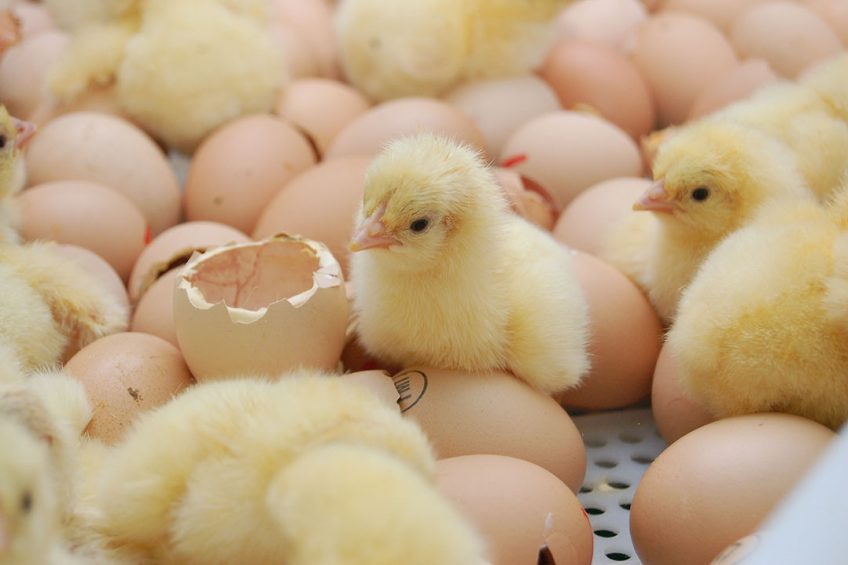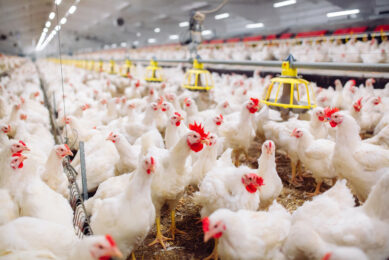Maintaining gut health without antibiotics

Reducing antibiotic use has been a key focus for the industry for many years. Probiotics, prebiotics, essential oils and organic acids are being successfully used as alternative strategies to promote gut health. However, the key to managing gut health is to understand the fundamental aspects of gut development and the requirements of the gut throughout the life of the bird.
Gut health can be defined broadly as the ability to defend against pathogens, digest feed into its constituent parts and then absorb the digested nutrients. In order to do this there must be optimal development of the gut tissues, the gut immune system, and the development of a beneficial gut microbiota. In terms of function, the gut plays a critical role in the health and performance of the broiler chicken; it is not only the organ for digestion but also one of the major interfaces between a bird’s immune system and the environment. Failure of the gut to develop or function properly will impact upon a chicken’s ability to absorb nutrients and grow, and also the ability of the bird to defend itself from disease.
Gut microbiota
The gut microbiota is a complex community of bacteria, fungi, viruses and protozoa residing along the intestinal tract. The gut microbiota plays an important role in bird health as it protects against pathogens, stimulates the development and maturation of the immune system, and promotes the correct development and function of the gut tissues. The major colonisation of the gut occurs after hatch with micro-organisms entering the gut from the chicks’ environment, this community then matures as the gut develops. The gut microbiota is dynamic and changes as the bird ages due to physiological changes in the gut, changes in the environment and changes in diet. Gut health relies on the development and maintenance of a balanced microbiota.
The last few days of incubation is critical for the final stages of in ovo gut development, as such getting incubation conditions correct is critical. During the first two weeks after hatch the gut undergoes rapid development; this growth depends upon the presence of feed and water in the gut, the presence of a favourable gut microbiota, and correct brooding conditions. One of the most important features of the post hatch gut development is the rapid growth of the villi which are finger like projections which line the small intestine and increase the surface area for absorption. Failure of the villi to develop correctly during brooding (when villi growth is most active) will result in small villi in the adult bird which increases the risk of nutrient malabsorption and bacterial imbalance.
Factors influencing gut health
There are a range of factors which influence gut health such as development of the gut, feed quality, water quality, management and biosecurity. As already mentioned, early gut development relies on good brooding conditions, good management and access to feed and water.

Feed plays a major role in gut health; feed composition and nutrient density can alter the microbiota which must be remembered when feeds are changed. Feed that is poorly pelleted or contains a high level of fines can have a negative impact on gizzard function and subsequent gut health. The gizzard acts a mechanical grinding mill to prepare the feed for digestion in the small intestine. During the grinding process the feed is mixed with acid and enzymes which pre-digests protein before passing into the small intestine. If the feed particles are too small the gizzard has nothing to grind and the feed passes through into the small intestine without being mixed adequately with the acid and enzymes. This can increase the viscosity of the gut contents which increases the risk of diseases such as necrotic enteritis, and impacts upon nutrient absorption leading to a dysbacteriosis.
Water quality also plays a major role in gut health as it can be a source of pathogens, therefore an effective water sanitation strategy must be in place on every farm. Failure to adequately sanitise the water can lead to intestinal infection and a build-up of biofilm in the waterlines which will impact upon the flock and potentially damage equipment. Water pH and mineral content can also impact upon gut health; water with a pH >7 increases the risk of bacterial growth especially if the water is hard where the risk of limescale and biofilm build up is greater. Some minerals, such as iron and manganese stimulate the growth of bacteria like E. coli which can put pressure on the balance of the gut.
Gut health products
There are many products available to support gut health and choosing the right gut health product can be difficult as they vary in their mode of action. Some gut health products provide or stimulate beneficial bacteria, some promote the development of the gut tissues, some aid digestion and others inhibit pathogens. Therefore, when deciding which product to use, it is important to investigate what is causing the gut health issue and ensure that any potential product has the required mode of action to give the desired outcome. Whilst these products often get called ‘alternatives to antibiotics’, they are more preventative and thus their use should be considered as an ‘alternative strategy’. As part of this strategic approach the aim is to administer a product which offers a solution to the needs of the gut at significant points in the chicken’s life; development, transition and maintenance. During the development stage the aim is to promote bacterial colonisation, and stimulate tissue and immune development. The transition stage refers to the time periods where there are fluctuations in the gut environment in response to impacting factors such as a feed change, vaccination and handling. These events can cause a change in the intestinal environment and increase the risk of malabsorption and bacterial overgrowth. The maintenance stage refers to the period when the gut has stopped developing and reached balance, however there is still the risk of disruption due to management or pathogen challenges, so it is important to maintain support of the gut tissues.
Figure 1 – Understanding the needs of the gut at different points in the birds’ life and the main aims of gut health support at these times.

Managing gut health relies on understanding the needs of the gut, recognising when the gut is at risk of becoming imbalanced and acting quickly when a disruption to the gut is suspected, see Figure 1. Appreciating all the factors which can impact the gut, and understanding the interactions between gut function and biological performance will allow optimal expression of the genetic potential in the field.
Author: Dr Richard Bailey, Poultry Health Scientist, Aviagen











